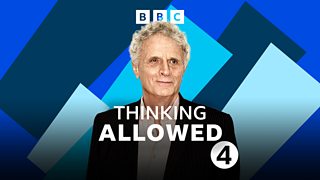When are you the happiest in life?
In Radio 4’s podcast, Uncharted, mathematician Hannah Fry explores the compelling, strange and sometimes chilling human stories that can lie behind a few simple lines on a graph.
In Episode 6, Fry looks at how age affects our happiness – are we really happiest when we’re young? Professor Andrew Oswald has discovered a strong, consistent trend among people’s happiness as they age, which was invisible without the aid of numbers. This trend has far-reaching implications that touch upon our mental health, our physiology and the way we experience joy.
Here are eight findings from the podcast that explore and explain the human predisposition for happiness.

Older people believe they were happiest in their early 20s
A conversation with the seniors at Stanstead Lodge Senior Club in Lewisham revealed an overwhelming consensus – most seniors believed they were happiest in their late teens and early 20s, back when they were free of responsibility and experiencing the newfound freedom of adulthood. As James, the Chair of the lodge, puts it, “Oh yes, I was a real party animal. I had a very extended youth. I didn’t get any responsibilities until I was about 40.”

Happiness can be measured
Although happiness may seem like an ephemeral, subjective concept, it has been measured thoroughly since the 1990s. Using a dataset gathered via questionnaires over the past two decades, researchers have found statistically significant conclusions in the data. You may have come across these before: People in Scandinavian countries such as Denmark and Sweden are typically the happiest, while unemployed people are broadly unhappy regardless of how much income they earn or have earned.
Happiness has stable patterns
Not only do different demographics have different happiness levels, but the change in happiness follows definable patterns. Economist David Blanchflower, a professor at Dartmouth College, noted in his paper ‘’ that happiness variations are remarkably similar to variations in more concrete data such as wages. Although he initially planned to investigate the effect of wage on happiness, he and collaborator Andrew Oswald soon found a more remarkable relationship between age and happiness. They tested this U-curve in several ways – first using data of 500,000 people from the US and Western Europe, where they found a clear middle-age slump. More data confirmed a U-Shaped happiness curve in Asia, South America, and Eastern Europe, then finally, surveys of people in 72 developed and developing countries around the world confirmed the same pattern – that happiness seems to have a definite shape…
Happiness follows a U-shaped curve
While we are happiest in our 20s as the seniors predicted, our happiness then descends down to a nadir in our late 40s before reversing direction and climbing back up into our 70s. That means, statistically, middle-age is the unhappiest time in people’s lives. Remarkably this exact same U-shaped curve holds true across sex, race, culture, climate and over 100 countries, making it one of the most solid findings in all of social science. It even ignores presumed predictors of happiness such as menopause or whether the person lives in a developed or developing country.
There are plenty of theories explaining the mid-life crisis
The classic mid-life crisis seems the best explanation for this drop in happiness: When you reach mid-life, you may realise you’re either going to achieve greatness in life or that you might descend. As Andrew puts it: “In mid-life, in general, people don’t live up to their aspirations when they were in youth and that is psychologically painful.” It’s also worth noting that mid-life is when plenty of acute stressors are hitting all at once, such as kids leaving home, career stress and possibly divorce.

What about our genetic cousins, the great apes?
This may seem like a non-sequitur, but hear us out. Andrew looked for other data to see if the aforementioned social theories were really causing mid-life depression. To remove some of those social elements, he studied our closest relatives: primates. Primates such as orangutans are incredibly intelligent, expressive and curious, experiencing the full range of human emotions – from tantrums to affection to, yes, happiness.
The happiness U-shaped curve isn’t just a human phenomenon
Doctor Alex Weiss of the University of Edinburgh shared his research data on non-human primate happiness with Andrew, consisting of mental wellbeing surveys dating back to 2010. After looking at happiness scores for more than 500 chimps and orangutans, Andrew noticed the exact same U-shaped curve – even orangutans have a mid-life crisis!
So why might we feel sad in mid-life?
If U-shaped happiness curves exists between species, what’s the underlying cause? It appears as though there is structured happiness to aging. Although Andrew does not have a definitive answer, it appears there may be genetic or physiological effects that underpin our perception of personal happiness. It’s also prudent to point out, other studies have found variations in the happiness curve, so perhaps happiness and its shape will always elude us.
To hear more thrilling tales from the world of statistics, listen to the full series of Uncharted on 麻豆社 Sounds.
More from 麻豆社 Radio 4
-
![]()
How you can learn to be happier
Life lessons of happiness to learn how you can hack your happiness back.
-
![]()
Ten simple ways to improve your mood that don鈥檛 involve exercise!
Dr Michael Mosley explores joyful activities from singing to taking a nap.
-
![]()
Thinking Allowed: The 'Happiness Industry' - The 'Wellness Syndrome'
Laurie Taylor asks if policy makers are too focused on the idea of 'happiness'.
-
![]()
Money Box Live: Happiness and Money
Money Box discusses happiness and money and what's the secret to success.





